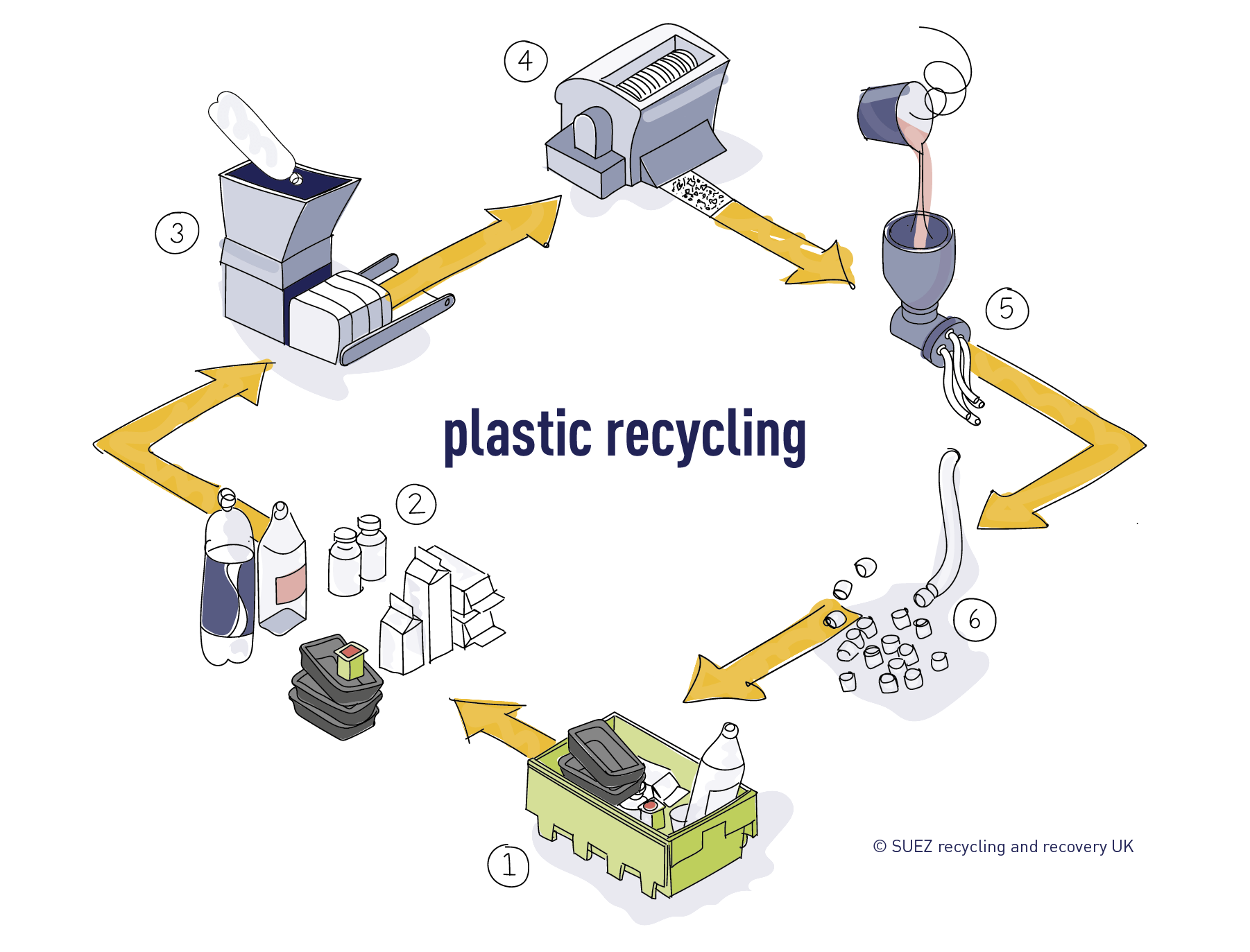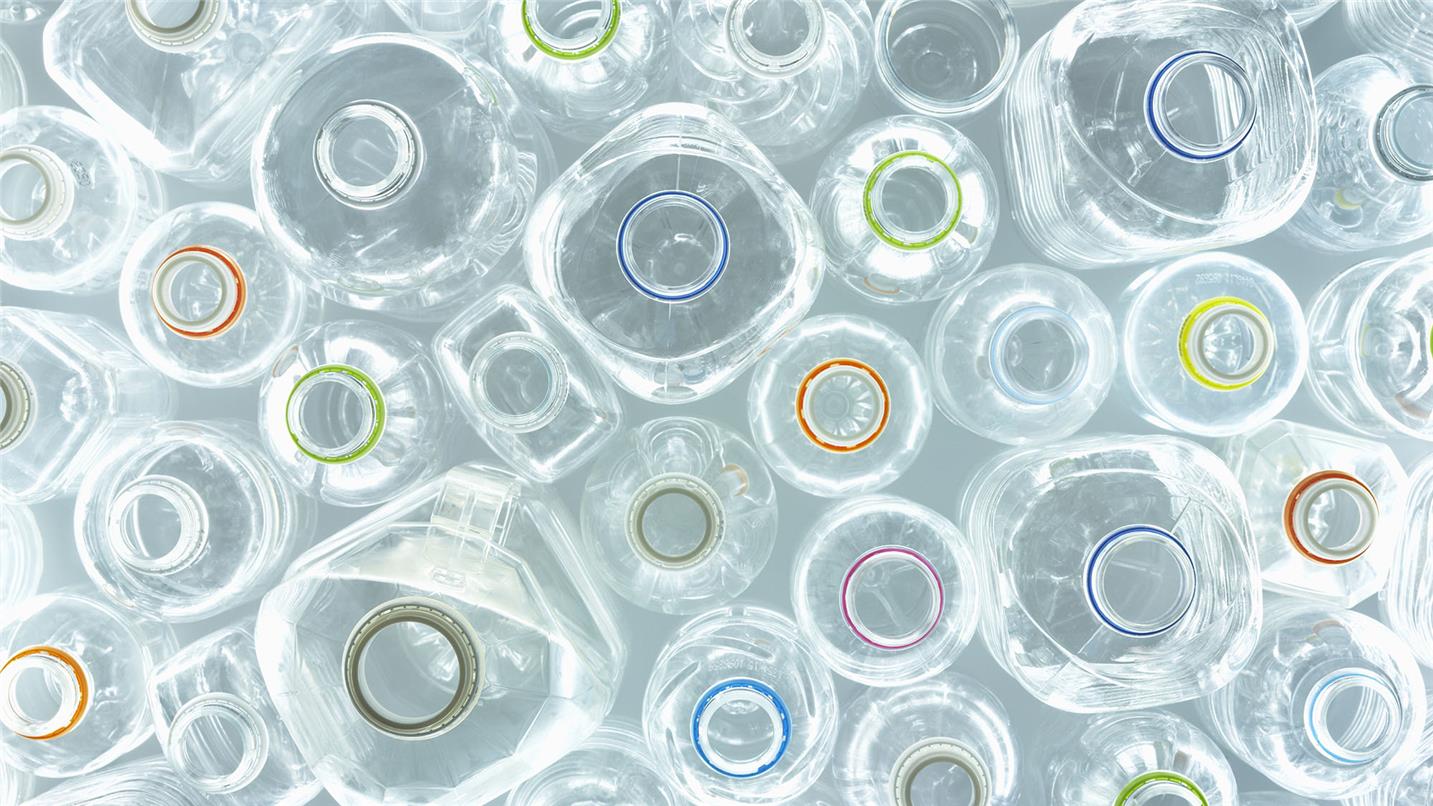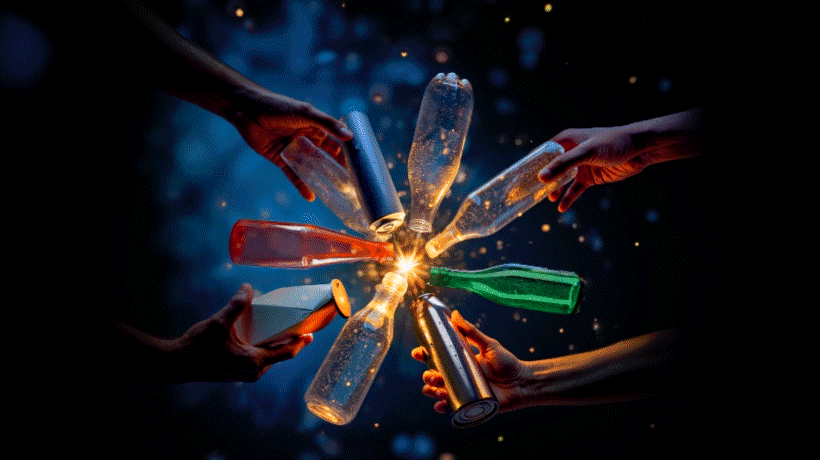What happens to plastic?

1. Collection
Plastics are collected for recycling from people’s homes, recycling sites and businesses.
2. Sorting
Before they can be processed, plastics must be sorted according to their type of polymer. This determines each material’s melt temperature and possible end uses.
These polymer types, stamped on plastic objects (such as cups and bottles), are:
- PET or PETE – Polyethylene Terephthalate
- HDPE – High-Density Polyethylene
- PVC or V – Polyvinyl Chloride
- LDPE – Low-Density Polyethylene
- PP – Polypropylene
- PS – Polystyrene
- Other – Plastics including acrylic, polycarbonate, nylon and fibreglass
3. Baling
Once sorted, the plastics are compressed by a machine into a bale shape and transported to a plastic reprocessing plant.
4. Shredding and cleaning
At the reprocessing plant, the plastic is shredded into small pieces and then washed. Passing the plastic pieces under a metal detector removes any metal and another unit removes any lighter particles.
5. Melting and extrusion
The clean plastic pieces are dried and melted. Filtering the melted plastic removes any remaining contaminants, before it is extruded (passed through a wire screen) to form fine strands, like spaghetti. Some may be extruded into very fine strands to be spun into fibre to make fleeces, sleeping bags or ski jackets.
6. Pelletizing
For other uses, the plastic strands are cut into pellets, cooled in water, then dried and stored ready to be processed and moulded into new plastic items.

